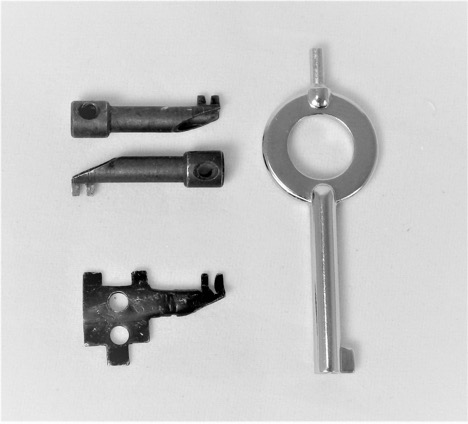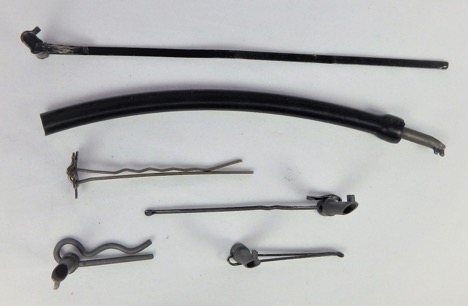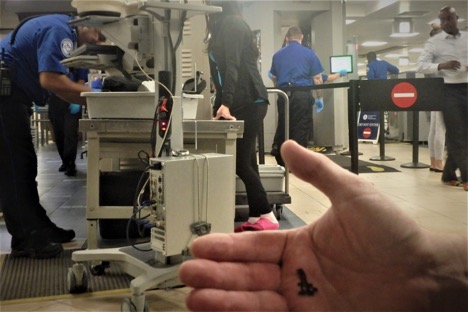SDN has moved again!
Subscribe to our RUMBLE channel

Oscar Delta AHK3’s compared to a standard handcuff key and an early prototype flat handcuff key.
First off, I’m not a lawyer, and nothing in this article should be misconstrued as legal advice. You are responsible for your actions and their consequences. That said, I’m writing this for Survival Dispatch, which is based out of Florida, which has some heavy-duty laws that pertain to handcuff keys. From what I can tell, if you get arrested by law enforcement and you’re carrying a handcuff key, you’d best let them know about it, or you risk a third-degree felony unless you are law enforcement, licensed security or license in one of a few other related fields.
What Makes a Good Restraint Escape Handcuff Key?
I’m not saying that what meets my needs is exactly what you need. Your needs may differ from mine.
I mostly carry handcuff keys along with other gear to help me escape unlawful restraint, both because I travel to South America where the risk of kidnap is high for folks like myself, and also in case things here in the States go sideways, and it becomes more like South America, which could happen in a hurry if the power grid fails for more than a day or so.
Components of a Handcuff Key
Here is what I incorporate into an effective handcuff key for restraint escape designed to open the highest number of modern handcuffs with a single key:
Holes or slots to attach a reach tool to the handcuff key
When properly cuffed in rigid handcuff with your fingers facing away from the keyway, unless you’re Harry Houdini, you’re going to need a reach tool (such as a bobby pin or a very long handcuff shim) to get the key into the keyway and manipulate it to open the handcuffs. Holes also aid in bending the reach tool to secure the handcuff key.
Reach tool
In addition to what was mentioned above, a reach tool also helps prevent you from dropping the handcuff key with fingers that may very well be throbbing in pain, bloody or cold and can also be used to clip the key to clothing or hair if desired.

Various types of reach tools attached to handcuff keys in different ways. Notice the cross-section of a flat cuff key compared to Oscar Delta’s Advanced Handcuff Key.
Stamped from non-ferrous material
When you wear a standard nickel-plated handcuff key next to your sweaty body every day they rust until they eventually break or become useless. My preferred material is sheet brass. Why not plastic? Even steel handcuff keys break, and restraint escapes often take place under conditions that are less than ideal with shaky hands and diminished fine motor skills, which leads to breakage at the worst possible moment.
It is also sometimes necessary to modify handcuff keys to open high-security handcuffs by removing material, which further weakens handcuff keys. I prefer to stamp keys rather than to affix teeth to a shaft because stamped teeth are more likely to bend rather than break if too much pressure is applied. That way the key can often still be reused and is less likely to foul the keyway or bind internals with broken pieces, unlike plastic keys or steel keys with welded teeth.
Flat
The thicker an escape tool is, the easier it is to find in a pat down. Therefore flat handcuff keys are generally harder to find, and a flat cross-section makes it possible to conceal handcuff keys in more ways.
Tooth spacing and barrel relieved for high-security handcuffs
Deviant Ollam of TOOoL (The Open Organization of Lockpickers) published some research on optimal tooth spacing, and SnakeDr designed a high-security key for Oscar Delta that features similar tooth spacing. I use slightly different tooth spacing that I arrived at through my own subtractive methodology which is only to use as much material as is needed, but enough that the teeth don’t break off in use.
Double-ended
If you don’t mind adding length to the key, a flat S&W 104 key can be added to the opposite end since that is probably the second-most popular key that cannot be opened by a standard/high-security key.
Do not use credit card formfactor
Sometimes manufacturers stamp handcuff keys into sheet metal cards and the most popular formfactor is the credit card size. While this formfactor may be convenient to ensure that you have specific tools on your person, I don’t recommend carrying restraint escape gear in your wallet because it’s going to be the second thing that will be taken from you, right after any weapons. Whether a kidnapper or law enforcement have just restrained you, they are going to want to know who they have in custody and will look in your wallet for ID. Handcuff keys also shouldn’t be concealed in expensive-looking watches or jewelry, since a criminal will likely relieve you of those too.

An early prototype flat handcuff key that just passed right through a TSA full body scan and pat down. Mrs. Cache is distracting a guard (and apparently some guy in line) while I grab a photo.
Using Handcuff Keys
When opening handcuffs, open them like you are picking the lock even though you are using a key. Feel the mechanism with the key. Pull the key out or push it in just a hair until it sweeps the double lock bar(s) and lock bar smoothly. If you meet resistance, adjust the position of the key slightly and try again until it opens. If you apply too much force to the key, it will break, and then you may be even worse off than before you tried to open the lock because part of the key may bind in the mechanism or the keyway.
This probably shouldn’t come as a surprise (but usually does), but criminals often use cheap military surplus store handcuffs instead of quality law enforcement handcuffs and law enforcement officers and survivalists tend to practice with latter because it’s what they have handy. Cheap handcuffs often don’t have smooth internals like more expensive handcuffs, especially if they have spent the last few years knocking around and rusting behind the seat in some deadbeat criminal’s pickup. I suggest that you add such a set of handcuffs to your collection and practice opening them.
=====
Become a Survival Dispatch Insider …
We bring together survival enthusiasts and preppers to share skills and knowledge, so you can enhance your preparedness for emergencies and ensure the safety of you and your community.
The Results You’ll Get …
Our community, courses, and memberships are pretty special. We focus on the ways it will make a huge difference in your life.
Here are a few of the things you’ll be able to do as a member of Survival Dispatch Insider …
1) Improve your emergency preparedness by learning survival skills and strategies from experienced preppers.
2) Build lasting connections with like-minded individuals that share your passion for safety and readiness.
3) Access a wealth of knowledge and resources to assist in protecting you and your community during unexpected situations.
Click HERE to get started.
=====
